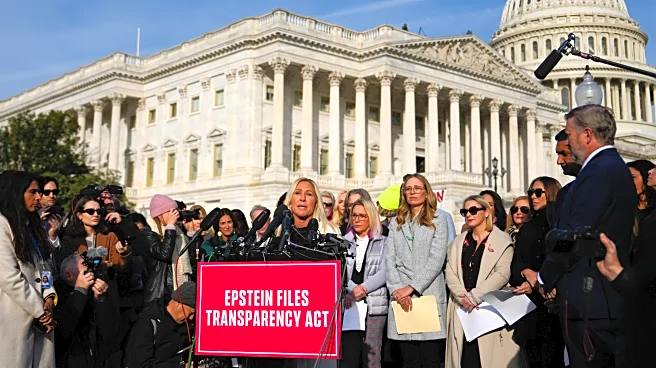What's Happening?
The Kentucky Agricultural Finance Corp. (KAFC) has approved 19 loans totaling over $4.1 million to support agricultural projects across the state. During its monthly meeting on November 14, the KAFC board
authorized $4,112,135 in financing. The loans are distributed through two programs: the Agricultural Infrastructure Loan Program and the Beginning Farmer Loan Program. The Agricultural Infrastructure Loan Program approved six loans totaling $1,380,000 for projects in Caldwell, Graves, Trigg, and Webster counties. This program partners with lenders to fund permanent farm structures and equipment to improve farm profitability. The Beginning Farmer Loan Program approved 13 loans totaling $2,732,135 for applicants in various counties, including Breckinridge, Caldwell, Fleming, and others. This program aims to assist individuals with farming experience to start, expand, or buy into farming operations.
Why It's Important?
The approval of these loans is significant for Kentucky's agricultural sector, providing essential financial support to farmers and agricultural entrepreneurs. By facilitating access to capital, the KAFC helps enhance farm profitability and sustainability, which is crucial for the state's economy. The Agricultural Infrastructure Loan Program supports the development of farm structures and equipment, directly impacting farm productivity. Meanwhile, the Beginning Farmer Loan Program encourages new entrants into the farming industry, promoting generational renewal and innovation. These initiatives can lead to increased agricultural output, job creation, and economic growth in rural areas, benefiting local communities and the broader state economy.
What's Next?
As these loans are implemented, recipients will likely begin their projects, leading to improvements in farm infrastructure and operations. The success of these projects could encourage further investment in Kentucky's agricultural sector. Additionally, the KAFC may continue to evaluate and approve more loans in future meetings, potentially expanding the reach and impact of these programs. Stakeholders, including local governments and agricultural organizations, may monitor the outcomes to assess the effectiveness of the funding and explore additional support mechanisms.















